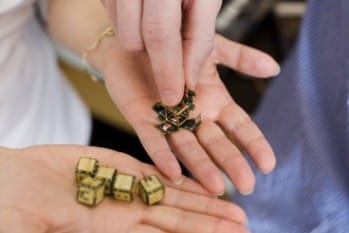Just a Few More Years Till We Have Liquid Metal
Sand art is about to take on a whole new meaning. MIT has recently announced "smart sand."
LOS ANGELES — Sand art is about to take on a whole new meaning. MIT has recently announced “smart sand,” and I can’t come up with any better opening line than the announcement from their press office:
Imagine that you have a big box of sand in which you bury a tiny model of a footstool.A few seconds later, you reach into the box and pull out a full-size footstool: The sand has assembled itself into a large-scale replica of the model.

After double checking that the release date wasn’t April 1, I watched the explanation video, linked above. The sand, which is still conceptual at this point, would work with a subtractive method, meaning that shapes are created by taking away sand parts. Like a sculpture, unnecessary grains would simply chip away, and a shape would gradually form.
Researchers Daniela Rus and Kyle Gilpin tested out the idea with “smart pebbles,” cubes with processors and magnets that can come together and come apart based on basic algorithsm. If these cubes can be shrunk and then scaled to large amounts, sand could form.
Right now, the project is quite conceptual, but I can’t wait to see what artists do with all the possible interactions. My prediction? Someone’s going to create a sculpture that mimics the liquid metal, shape-shifting T-1000 depicted in Terminator 2.





